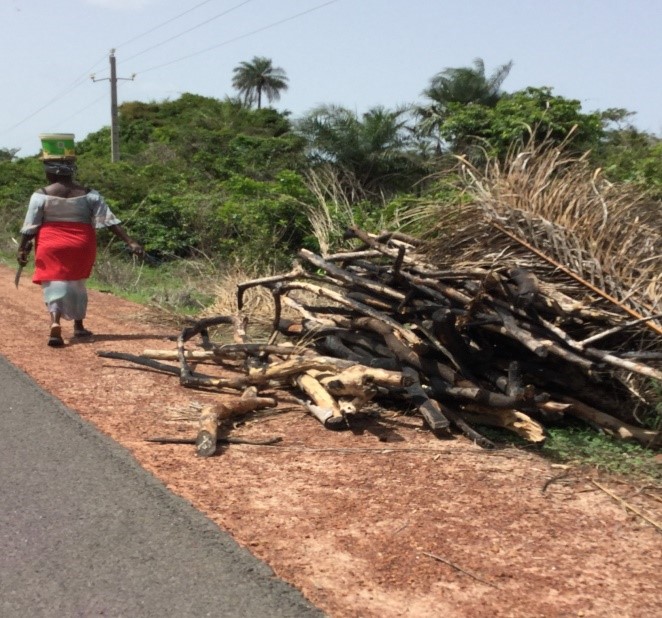Written by CorpsAfrica/Senegal Volunteer Mr. Abdou Cisse
“A Diola Sembé,” to translate the strength and courage of labor in the Diola. Working in the fields structures all the social and economic organization of the Diola. A Diembéreng, the daily activities of Way Sira (host mom) do not only revolve around fieldwork activities. Everything is organized by time and space. Nothing is done spontaneously. Each season is well prepared to avoid unpleasant surprises. The end of the dry season is marked by the appearance of the first drops of rain. A new cycle in the socio-cultural organization of AWATT people begins. It is punctuated by new activities, still agricultural, but not just any cultivation. It has to do with one that is found in the heart of the Diola agricultural cultivation: rice.
During this time of year (late June), women who work exclusively on the fields gardening during the dry season, abandon the fields at 90% and begin to prepare for the winter. Men who were busy harvesting Bounouck (palm wine) begin to visit the rice fields and go into the forest to prepare the spaces that will accommodate the rice beds. They chose large spaces in the palm grove, cut the shrubs and clean well, waiting to put the rice seeds.
Meanwhile, the brave women, take the necessary precautions to ensure the functioning of the household throughout the rainy season. That means having enough dry firewood that could ensure the cooking during all winter season, especially since this fuel is used by over 95% of the population; but also a sufficient quantity of rice pounded for the restaurant, which tends to be in high demand during this period. For this, a large amount of rice is taken out of the attic and fed to the single shelling machine on site. The rice is then dried, crushed and stored in barrels. All the while, the women leave to look for firewood in the forest. Much of is stored in the rice fields and the rest is brought home. This is justified by the fact that except Sunday, rest day, and days of heavy rain, the whole family goes to the rice fields from morning to night, so everything is done on site.
This is also the time of preparation kadiandous, the Diola’s main working tool. Want to know how it is used? Patience, I will share a taste in my next blog.
Version originale en français
A chacun sa tâche, hivernage arrive
« A Diola Sembé », pour traduire la force et le courage du travail chez le Diola. Le travail de la terre structure toute l’organisation sociale et économique du Diola. A Diembéring, le quotidien de Way Sira[1] ne s’articule pas seulement autours des activités maraichères. En effet tout est organisé dans le temps et dans l’espace. Rien n’est fait au hasard. Chaque saison est bien préparer pour éviter les mauvaises surprises. La fin de la saison sèche est marquée par l’apparition des premières gouttes de pluie. Un nouveau cycle dans l’organisation socio-culturelle du peuple AWATT débute. Il est rythmé par de nouvelles activités, toujours agricoles, mais pas n’importe quelle culture. Il s’agit de celle qui se trouve au centre de la culture Diola : la riziculture.
Arrivée à cette période de l’année (fin juin), les femmes qui pratiquaient exclusivement le maraichage pendant la contre saison sèche, abandonnent les jardins à 90% et commencent à préparer le période hivernale. Les hommes qui étaient occupaient à la récolte du Bounouck (vin de palme) commence à visiter les rizières et vont dans la forêt pour préparer les espaces qui doivent accueillir les pépinières du riz. Ils choisissent de grands espaces dans la palmeraie, coupent les arbustes et nettoient bien en attendant d’y mettre les graines de riz.
Pendant ce temps, les braves femmes, prennent les précautions nécessaires pour assurer le fonctionnement des ménages durant toute la période des pluies. Il s’agit d’avoir assez de bois morts qui puisse assurer la cuisson durant toute cette saison hivernale, d’autant plus que ce combustible est utilisé à plus de 95% par la population ; mais également une quantité suffisante de riz décortiqué pilé pour la restaurant qui a une tendance à la hausse pendant cette période. Pour cela une grande quantité de riz est sortie du grenier et amenée à l’unique machine de décorticage sur place. Le riz est ensuite séché puis pilé et stocké dans des barils. Parallèlement, elles partent chercher du bois mort dans la forêt. Une grande partie est bien stockée dans les rizières et une autre partie est amenée à la maison. Cela se justifie par le fait, qu’à part le dimanche, jour de repos, et les jours de forte pluies, toute la famille se rend aux rizières du matin au soir, et donc tout se fait sur place.
C’est aussi la période de la préparation des kadiandous, le principal outil de travail du Diola. Vous voulez savoir comment ça s’utilise ? Patience, je vous donnerai un avant-goût dans mon prochain blog.
[1] Cf. de mon dernier Blog qui retrace le quotidien des femmes de Diembéring pendant la contre saison.

